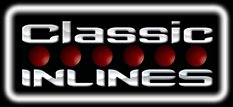 |
 |
|
|
|
Aluminum Cylinder Head - Design Parameters |
|||||||||||||||||||||||||||||||||||||||||||||||||||||||||||||||||||||||||||||||||||||||
Note: references to Ford Six Performance or FSPP refer to our old company name.
DATE 4-8-05 The first stage of the project is to outline the goals and parameters for the new aluminum head. Will the new cylinder head be produced purely for maximum power gains, for economical street use, or a combination of both. What type of induction systems will be utilized, will we use the stock configuration or cross flow technology, how many valves per cylinder, utilize the stock exhaust pattern or redesigned for improved flow. All these questions need to be considered before we begin designing the new head. One of our major concerns is the ability to use U.S. style headers. Considering many of our potential customers will already have headers, purchasing new headers would just be an added expense. Those that have headers, would more than likely wind up selling them on e-bay at reduced prices, since used parts never return the full purchase price regardless of the condition. Other points to consider, are the additional cost and frustration of rebuilding or modifying the exhaust system. As well as the availability of replacement gaskets for maintenance issues. If a custom exhaust port arrangement is utilized, Classic Inlines would be the only source for the gaskets. Many of our potential customers purchased headers which require removing the header for starter replacement. Imagine the frustration of breaking down while on the road, and not being able to go to the local parts store for replacement parts because you forgot to carry a spare or two in the trunk. Or possibly having to waiting a few days for a new gasket to arrive. Hence, if we can utilize the current port arrangement, and header designs, we eliminate all these potential problems and expenses. All which would add to the overall end cost of installing the new aluminum head. If we utilize a cross flow design, the same would hold true for the valve cover gaskets. However, this is not the case for intake gaskets, as they can be cut from sheet gasket material available at most parts stores. For more information see the pages on the Design Updates and Specifications, or read about the OZ250-2V head. You can also view pics in the Aluminum Head Photo Gallery.
During my conversations with the design engineer, we talked primarily about the overall design. Would it be based on the popular Australian 250-2V pre cross flow head, which would meet most of the above specifications. Or start with a clean sheet and develop a cross flow design which would produce more power, more efficiency. Both have their advantages and disadvantages, yet some issues with a cross flow design may be difficult and/or expensive to overcome. Such as the clearance between the distributor and the bottom of the intake manifold. This is more of an issue with the 200ci. as the 250ci has a higher deck.
It is clearly evident that a cross-flow offers the best power potential, however it would also require extensive research and the development of associated parts, which would substantially increase the price of the cylinder head. An efficient cylinder head design, and its potential for maximum performance, basically comes down to one critical detail, which is reducing the total ignition advance as much as possible. The lower the total advance, the more power and torque the head will produce. This is accomplished by re-designing the ports and chambers so that the optimum configuration is achieved. Utilizing the cross flow design is preferable, as it allows a wider range of port and chamber designs. However, a cross-flow head may be infeasible due to the added expense of designing new valve covers, headers, rocker assemblies, and possibly the distributor. New intakes will more than likely be needed for either design, thus they are not a serious consideration. Which ever we choose, by using the latest technology, equipment, and the experience of the industries leading experts in cylinder head design, the benefits in performance will be substantial over all other current options available, and our goals will have been met. |
|||||||||||||||||||||||||||||||||||||||||||||||||||||||||||||||||||||||||||||||||||||||

[ home ]
Copyright 2012 - Classic Inlines - All Rights Reserved
![]()
![]()